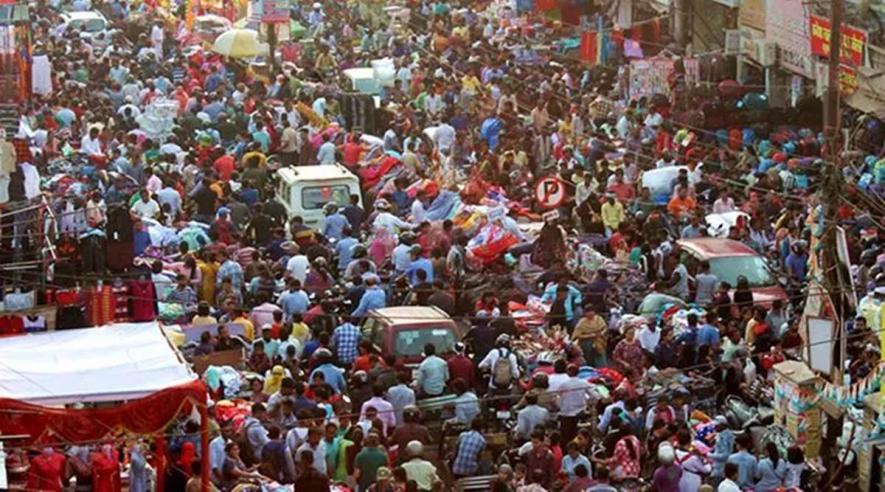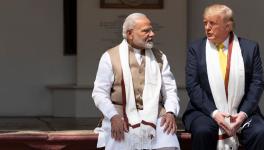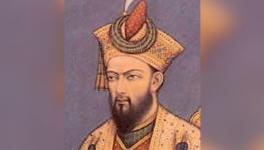Does India Have Enough Confidence to be Atmanirbhar?

Representational image. | Image Courtesy: The Indian Express
Just when he seemed to have given up on realising the aspirations of “New India” Prime Minister Narendra Modi has triggered a much-needed new imagination to make India “atmanirbhar”. Even an economy runs on the basis of a certain imagination of what is good or not for the nation. To emerge from the deep freeze of the Cold War, nations had collectively invited globalisation in and thus created a new normative universal. Today, with the neo-liberal order in a crisis, nations are returning to protectionism, national interest, and an economic nationalism that was earlier known as Swadeshi.
However, being atmanirbhar is a higher ideal than the conception of Swadeshi. Atmanirbharta is not limited to the economic realm but imagines a social order based on self-reliance. But self-reliance, in turn, requires confidence. The question that needs to be probed is: do India and Indians have the confidence required to become atmanirbhar?
India comes across as a nation where confidence is in acute shortage. Confidence is perhaps its most scarce commodity. Confidence is about being ones’ own self, without feeling hesitation or stigmatised or diffident. Confidence is a necessary prerequisite to explore the social world and expand the sense of self.
Critical theorist Axel Honneth argues that the idea of self and recognition has three irreducible dimensions: self-confidence born out of love and emotional security; self-respect born out of equal treatment and equal legal status and a self-esteem born out of a sense of achievement and merit.
It is possible to argue that decolonisation did not merely imply sovereignty but, in essence, was a project to regain these three aspects of the self. In other words, it required social transformation of rigid hierarchies along with political independence. The contribution of the “makers of modern India” could be seen precisely as those which sustain the new self and the unity it required. While Gandhi was struggling to restore self-confidence through his discourse of love and non-violence, Ambedkar and other social reformers and leaders of anti-caste movements focused on self-respect and equal treatment. Nehru, too, focused on institutionalising self-esteem, with his emphasis on modern dams, new technologies and innovation.
Yet, as a postcolonial democracy, India seems to have failed singularly in bringing these three dimensions together. As a result, we have remained a nation but have not attained enough confidence to be able to self-reflect. We failed to undo structural hierarchies of caste and gender. Violence linked to caste-psyche still permeates India’s social reality and this requires us to revisit, as part of our public reasoning, the question of confidence.
It is perhaps a unique aspect of Indian social elites that they lack social confidence just as much as the subaltern castes. Both ends of the caste hierarchy cope with lack of self-confidence in their own manner. Capitalist modernity has displaced the traditional lifeworld in a way that the social elites too were “subjects” as much as the subaltern castes were. Even the graded inequality of the caste structure produces confused subjects and a diffused psyche. Most social groups in India do not have a definitive social position—their status is something that is to be enacted and reproduced performatively in everyday interactions and negotiations. In other words, caste structures are performatively reproduced in the everyday consciousness.
However, what also makes the Indian context unique is the lack of confidence at both ends of the hierarchy. Confidence is replaced by pretence and emulation. For instance, India witnessed a processes of westernisation and Sanskritisation. Yet, from the bhadralok babudom or the claims from many quarters of belonging to higher locations on the Varna system, all are distinct markers of emulation. Consider the role of the English language as a source of cultural capital: for the lower castes, English is a source of cultural capital, it is also fodder in the fight against stigmatisation on the basis of caste and it is a tool to emulate the so-called higher castes. It is within this framework that differentially-located castes cope, to varying degrees, with their diverse and debilitating hesitations.
Indian history is replete with the dominant castes, such as the Kammas in Andhra Pradesh, becoming torch-bearers of the Communist movement, despite being landed. The explanation partly lies in the significance of modernisation through progressive ideologies that converge with ones’ own class status. At the lower end, India had movements for self-respect, led by figures such as Basava and Periyar.
The differential locations on the caste ladder in the Indian context does not neatly translate into confident elite castes, and diffident and stigmatised lower castes. Instead, different locations roughly translate into different modes of coping with under-confidence. Even the upper caste claims to merit are more posturing than actual self-belief. This becomes clear in the way they grab opportunities gained through their access to private education and paid seats, access to which is neither based on merit nor the quality of education provided. The upper castes claim to being meritorious is not a sign of confidence but a way of coping so as to gain moral legitimacy, and hence overcome insecurities by reproducing caste prejudices.
A careful study of the modes of coping leads us to realise that as social elites, upper castes may not feel stigmatised, but they are not a particularly confident social group. In modern contexts, ritual hierarchies do not neatly translate into social hegemony. Such hierarchies may enable the cornering of resources and opportunities and in establishing networks, but these cannot be mistaken for social confidence and self-belief. On the other hand, the lower end of the caste hierarchy suffers from both stigma and a sense of shame.
In such a context, it becomes important for the upper castes to liberate themselves from social prejudices in order to become atmanirbhar. Caste hierarchy produces privilege but not atmanirbharta. Liberation from a caste-based social order is essential to the enlightened self-interest of caste Hindus too.
Overcoming caste-based frailties would eventually require fraternal understanding between caste Hindus and all the rest. India is nowhere close to even moving in this direction, but this possibility could emerge from the counter-revolution we are currently witnessing. This fraternity could make better sense of what we mean by being atmanirbhar—more sense than the voluntarism that the Prime Minster is talking about in order to further propel neo-liberal reform.
The author is associate professor, Centre for Political Studies, Jawaharlal Nehru University. The views are personal.
Get the latest reports & analysis with people's perspective on Protests, movements & deep analytical videos, discussions of the current affairs in your Telegram app. Subscribe to NewsClick's Telegram channel & get Real-Time updates on stories, as they get published on our website.
























